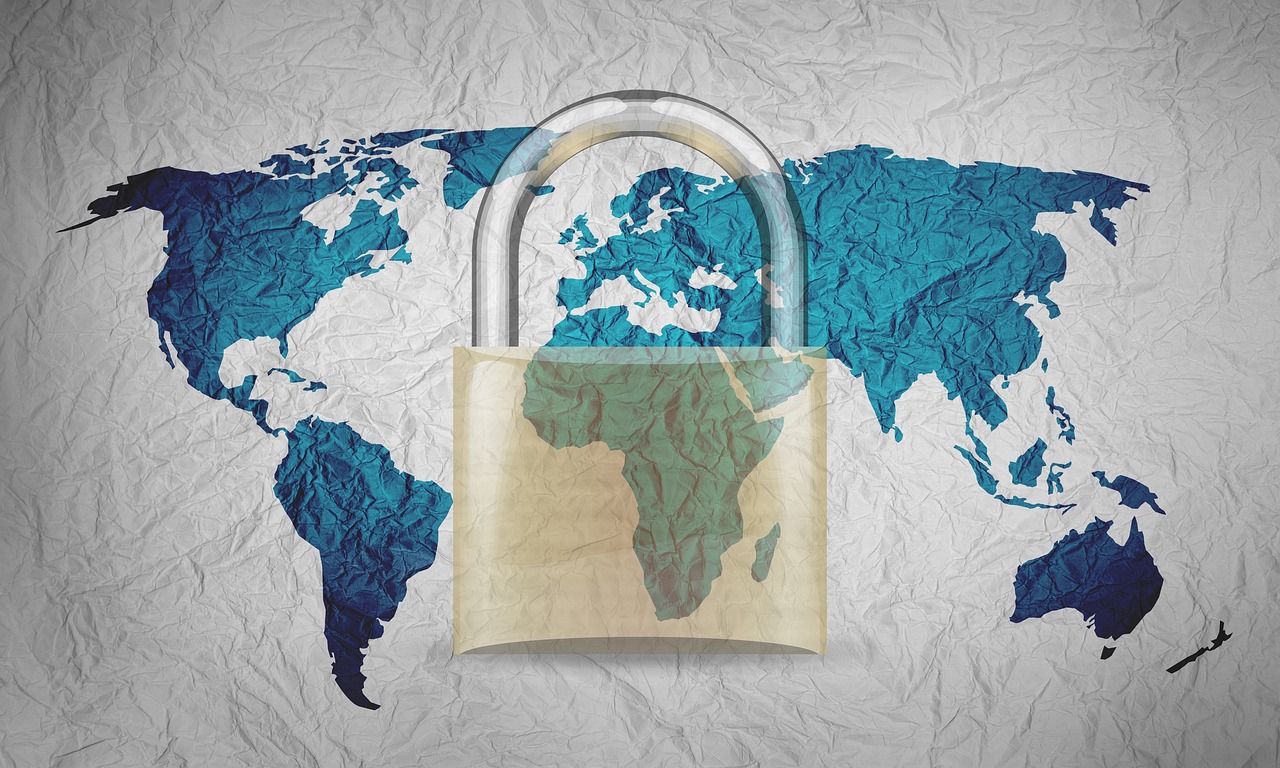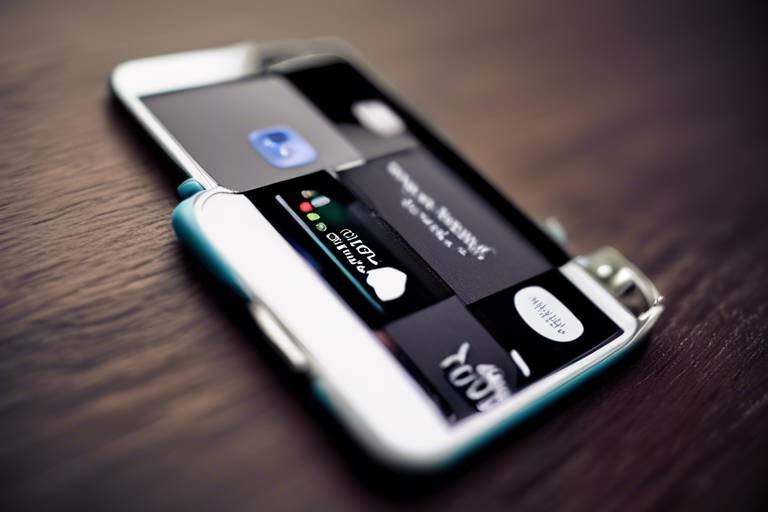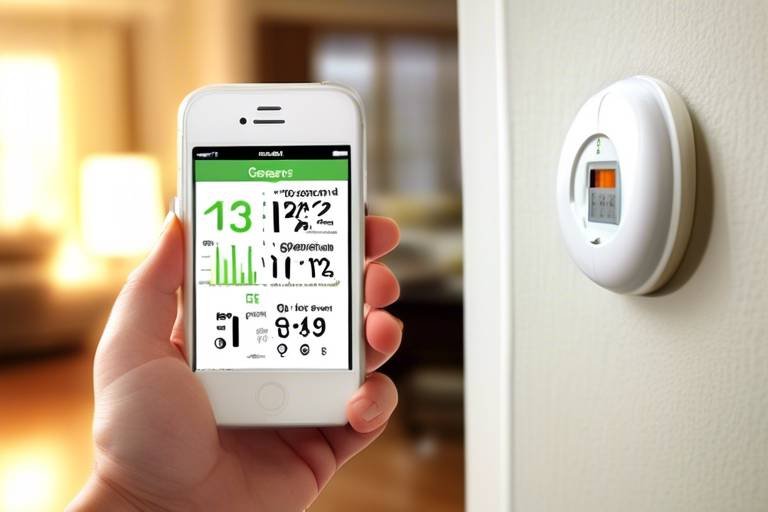How to Secure Your Online Accounts with 2FA
Online security is a top priority in today's digital age, where cyber threats loom at every corner, waiting to exploit vulnerabilities in our accounts. One powerful tool that individuals can utilize to fortify their online defenses is Two-Factor Authentication (2FA). This method goes beyond the traditional password protection by adding an extra layer of security, requiring users to provide two different authentication factors to access their accounts. But how exactly can you secure your online accounts with 2FA effectively?
First and foremost, it's crucial to understand the concept of 2FA and how it operates. By combining two distinct factors, such as something you know (like a password) and something you have (like a smartphone or security key), 2FA significantly reduces the risk of unauthorized access. This means that even if a malicious actor obtains your password, they would still need the second factor to breach your account.
When it comes to implementing 2FA, there are various methods available, each offering different levels of security. From receiving SMS codes to using authenticator apps like Google Authenticator or utilizing biometric data such as fingerprints or facial recognition, the options are diverse. Additionally, hardware tokens provide a physical device for authentication, adding an extra layer of protection against online threats.
Setting up 2FA on popular platforms is a straightforward process that can enhance the security of your accounts significantly. Major online services like Google, Facebook, Twitter, and banking websites offer step-by-step guides to enable 2FA. By following these instructions, users can safeguard their accounts from unauthorized access and potential data breaches.
However, implementing 2FA doesn't stop at the initial setup. To ensure maximum security, it's essential to follow best practices such as using unique and complex passwords, regularly updating security settings, and securely storing backup codes. These precautions can prevent potential security breaches and keep your digital information safe from cyber threats.
Despite the robust security measures that 2FA provides, there are still risks to be aware of. Threats like SIM swapping, where attackers gain control of a user's phone number, and phishing attacks that trick individuals into revealing their authentication codes can compromise the effectiveness of 2FA. By staying vigilant and adopting strategies to mitigate these risks, users can maintain the integrity of their online accounts.
The benefits of using 2FA are undeniable. Not only does it offer increased protection against unauthorized access, but it also reduces the risk of identity theft and enhances overall account security. By incorporating 2FA into your online practices, you can enjoy peace of mind knowing that your digital assets are well-protected.
Looking ahead, the future of 2FA technology holds exciting prospects. Emerging trends such as biometric authentication, behavioral analytics, and passwordless authentication are shaping the landscape of online security. These advancements promise even stronger safeguards against cyber threats, providing users with cutting-edge tools to defend their digital identities.
For businesses, implementing 2FA is paramount in safeguarding sensitive corporate data, complying with regulations, and ensuring secure remote access for employees. In a world where data breaches can have severe consequences, 2FA offers a crucial layer of defense against cyber attacks and unauthorized access.

Understanding Two-Factor Authentication (2FA)
This article delves into the crucial role of two-factor authentication (2FA) in bolstering the security of online accounts. It offers insights and recommendations on how individuals can efficiently deploy 2FA to safeguard their digital assets.
Two-factor authentication (2FA) is a security process that requires users to provide two different authentication factors to gain access to their accounts. By combining something the user knows (like a password) with something they have (like a smartphone), 2FA adds an extra layer of protection against unauthorized access.

Types of 2FA Methods
When it comes to securing your online accounts, Two-Factor Authentication (2FA) stands out as a powerful tool in the fight against cyber threats. But what exactly is 2FA and how does it work? In essence, 2FA adds an extra layer of security by requiring users to provide two different authentication factors before gaining access to their accounts. This means that even if a hacker manages to obtain your password, they would still need another piece of information to successfully breach your account.
There are several types of 2FA methods available, each offering varying levels of security. One common method is the use of SMS codes, where a one-time code is sent to your mobile device for verification. Authenticator apps, on the other hand, generate time-sensitive codes that users must enter along with their passwords. Biometrics, such as fingerprint or facial recognition, provide a more advanced form of authentication. Hardware tokens, like USB security keys, offer a physical device for authentication, adding an extra layer of protection.
It's important to choose the 2FA method that best suits your needs and provides the level of security you require. While SMS codes may be convenient, authenticator apps and biometrics offer higher levels of protection against potential security breaches.

Setting Up 2FA on Popular Platforms
Setting up two-factor authentication (2FA) on popular platforms is a crucial step in enhancing the security of your online accounts. Let's dive into the process of enabling this additional layer of protection on some of the most widely used platforms.
When it comes to Google, enabling 2FA is relatively straightforward. Simply navigate to your Google Account settings, locate the Security section, and select the 2-Step Verification option. Follow the on-screen instructions to link your account to a secondary authentication method, such as a mobile device or authenticator app.
For Facebook users, securing your account with 2FA involves visiting the Security and Login section in your account settings. From there, you can select the Two-Factor Authentication option and choose between using an authentication app or receiving login codes via text message.
Twitter also offers robust 2FA options to safeguard your account. Access your account settings, navigate to the Security and Account Access section, and enable Login Verification. You can opt to receive verification codes through a mobile device or a third-party authentication app.
When it comes to banking websites, setting up 2FA is critical for protecting your financial information. Most banks provide the option to enable two-factor authentication through their online banking portals. Check with your financial institution for specific instructions on how to activate this feature and ensure the security of your account.

Best Practices for 2FA Implementation
Implementing two-factor authentication (2FA) is a crucial step in enhancing the security of your online accounts. To ensure the effectiveness of 2FA, it is essential to follow best practices that can significantly bolster your account protection.
One of the fundamental best practices for 2FA implementation is to use unique passwords for each of your accounts. Avoiding password reuse minimizes the risk of a single breach compromising multiple accounts. Additionally, regularly updating your security settings and enabling 2FA wherever possible adds an extra layer of defense against unauthorized access.
When setting up 2FA, it is crucial to securely store your backup codes. These codes serve as a lifeline in case you lose access to your primary authentication methods. Storing them in a secure location, separate from your device, ensures that you can regain access to your accounts even in challenging situations.
Another important practice is to verify the legitimacy of 2FA prompts before entering your authentication codes. Be cautious of phishing attempts that mimic legitimate login screens to steal your credentials. Always double-check the URL and ensure you are providing your codes to the correct platform.
Regularly reviewing your 2FA settings and monitoring account activity can help you detect any suspicious behavior promptly. By staying vigilant and proactive in managing your account security, you can mitigate potential risks and safeguard your digital information effectively.

2FA Security Risks and Mitigation
When it comes to enhancing online security, two-factor authentication (2FA) is a powerful tool. However, like any security measure, 2FA is not without its risks. One of the common risks associated with 2FA is SIM swapping, where attackers trick mobile carriers into transferring a victim's phone number to a new SIM card under their control. This allows them to intercept 2FA codes sent via SMS and gain unauthorized access to accounts.
Another significant risk is phishing attacks, where cybercriminals use deceptive emails or websites to trick users into revealing their login credentials and 2FA codes. By posing as legitimate entities, attackers can easily bypass 2FA protections and compromise sensitive information. These risks highlight the importance of implementing additional security measures to mitigate potential threats.
To mitigate the security risks associated with 2FA, users should consider using authenticator apps instead of SMS codes for generating 2FA codes. Authenticator apps provide a more secure way to generate codes that are not susceptible to interception through SIM swapping attacks. Additionally, users should enable biometric authentication where available, such as fingerprint or facial recognition, to add an extra layer of security to their accounts.
Furthermore, it is crucial to stay vigilant against phishing attempts by verifying the authenticity of emails and websites before entering any login credentials or 2FA codes. Educating users about common phishing tactics and promoting cybersecurity awareness can help prevent falling victim to these malicious attacks. By adopting these mitigation strategies, individuals can significantly reduce the likelihood of security breaches and unauthorized access to their online accounts.

Benefits of Using 2FA
Implementing Two-Factor Authentication (2FA) offers a myriad of benefits that significantly enhance the security of online accounts. By requiring users to provide two distinct authentication factors, 2FA acts as a robust barrier against unauthorized access, adding an extra layer of protection beyond just passwords. This method greatly reduces the risk of identity theft and minimizes the chances of cybercriminals gaining control over personal information and sensitive data.
One of the key advantages of utilizing 2FA is the heightened defense it provides against various forms of cyber threats. With 2FA enabled, even if a malicious actor manages to obtain a user's password through phishing or other means, they would still require the second authentication factor to access the account. This significantly reduces the success rate of hacking attempts and acts as a powerful deterrent against unauthorized intrusions.
Moreover, the implementation of 2FA leads to an overall improvement in the security posture of individuals and organizations. By incorporating an additional layer of verification, users can rest assured that their accounts are safeguarded against unauthorized logins and potential security breaches. This not only instills a sense of confidence in users but also fosters a culture of cybersecurity awareness and best practices.
Furthermore, the adoption of 2FA contributes to a more secure online ecosystem by creating a collective shield against cyber threats. As more individuals and businesses embrace this security measure, the overall resilience of digital platforms and services increases, making it harder for cybercriminals to exploit vulnerabilities and compromise sensitive information. In essence, the widespread use of 2FA strengthens the digital defense mechanisms of the online community as a whole.

Future Trends in 2FA Technology
As technology continues to evolve, the future of two-factor authentication (2FA) is also seeing significant advancements. One of the emerging trends in 2FA technology is the widespread adoption of biometric authentication. Biometrics, such as fingerprint scanning, facial recognition, and iris scanning, offer a more secure and convenient way for users to verify their identities.
Another trend shaping the future of 2FA is the implementation of behavioral analytics. This innovative approach analyzes user behavior patterns to detect anomalies and potential security threats. By monitoring how users interact with their accounts, behavioral analytics can help identify unauthorized access attempts more effectively.
Furthermore, passwordless authentication is gaining traction as a future trend in 2FA technology. This method eliminates the need for traditional passwords and instead relies on secure authentication mechanisms like biometrics or hardware tokens. By removing the reliance on passwords, passwordless authentication aims to enhance security and user experience simultaneously.
Overall, the future of 2FA technology is moving towards more sophisticated and user-friendly authentication methods that prioritize both security and convenience. As cyber threats continue to evolve, staying ahead of the curve with these emerging trends in 2FA technology is crucial to safeguarding online accounts effectively.

2FA for Business Accounts
When it comes to securing business accounts, implementing Two-Factor Authentication (2FA) is paramount in today's digital landscape. Businesses handle sensitive data and information that must be safeguarded from cyber threats and unauthorized access. 2FA adds an extra layer of security by requiring employees to provide two different authentication factors before accessing corporate accounts, making it significantly harder for malicious actors to breach the system.
Businesses can choose from a variety of 2FA methods to suit their security needs. Options such as SMS codes, authenticator apps, biometrics, and hardware tokens offer different levels of protection. By combining these methods, companies can create a robust authentication process that minimizes the risk of unauthorized access and data breaches.
Setting up 2FA for business accounts involves educating employees about the importance of strong authentication practices and guiding them through the setup process. It is crucial for organizations to implement 2FA not only for their internal systems but also for external services and platforms that employees may access as part of their work responsibilities.
Moreover, 2FA plays a vital role in regulatory compliance for businesses that handle sensitive customer information. Many industry regulations require organizations to implement strong authentication measures to protect data privacy and prevent security breaches. By incorporating 2FA into their security protocols, businesses can demonstrate their commitment to data protection and regulatory compliance.
Additionally, 2FA enhances secure remote access for employees working outside the traditional office environment. With the rise of remote work arrangements, ensuring that employees can securely access corporate accounts and systems from anywhere is essential. 2FA adds an extra layer of security to remote login procedures, reducing the risk of unauthorized access and data leaks.
Frequently Asked Questions
- What is two-factor authentication (2FA)?
Two-factor authentication (2FA) is a security process that requires users to provide two different authentication factors to verify their identity before accessing an online account. This typically involves something the user knows (like a password) and something the user has (like a mobile device).
- Why is 2FA important?
2FA adds an extra layer of security to online accounts, making it significantly harder for unauthorized individuals to gain access. By requiring two different factors for authentication, 2FA helps protect sensitive information and reduces the risk of unauthorized access.
- What are the different types of 2FA methods?
There are various methods of 2FA available, including SMS codes, authenticator apps, biometrics (like fingerprint or facial recognition), hardware tokens, and more. Each method offers different levels of security and convenience for users to choose from.
- How can I set up 2FA on my online accounts?
Setting up 2FA on popular platforms like Google, Facebook, Twitter, and banking websites is usually a straightforward process. You can enable 2FA in the security settings of each platform and follow the step-by-step instructions provided to link your account to a second authentication method.
- What are the benefits of using 2FA?
Using 2FA offers several benefits, including increased protection against unauthorized access, reduced risk of identity theft, and enhanced overall account security. It provides an additional barrier against cyber threats and helps safeguard your digital information.



















